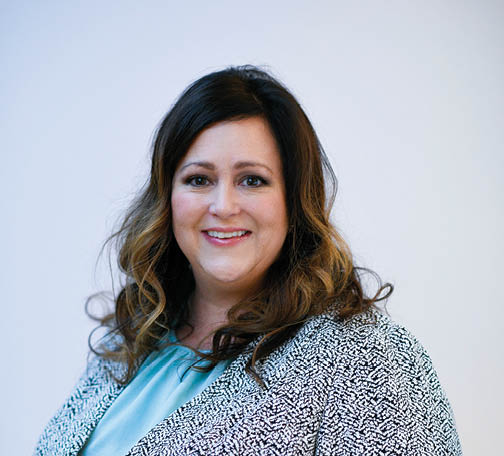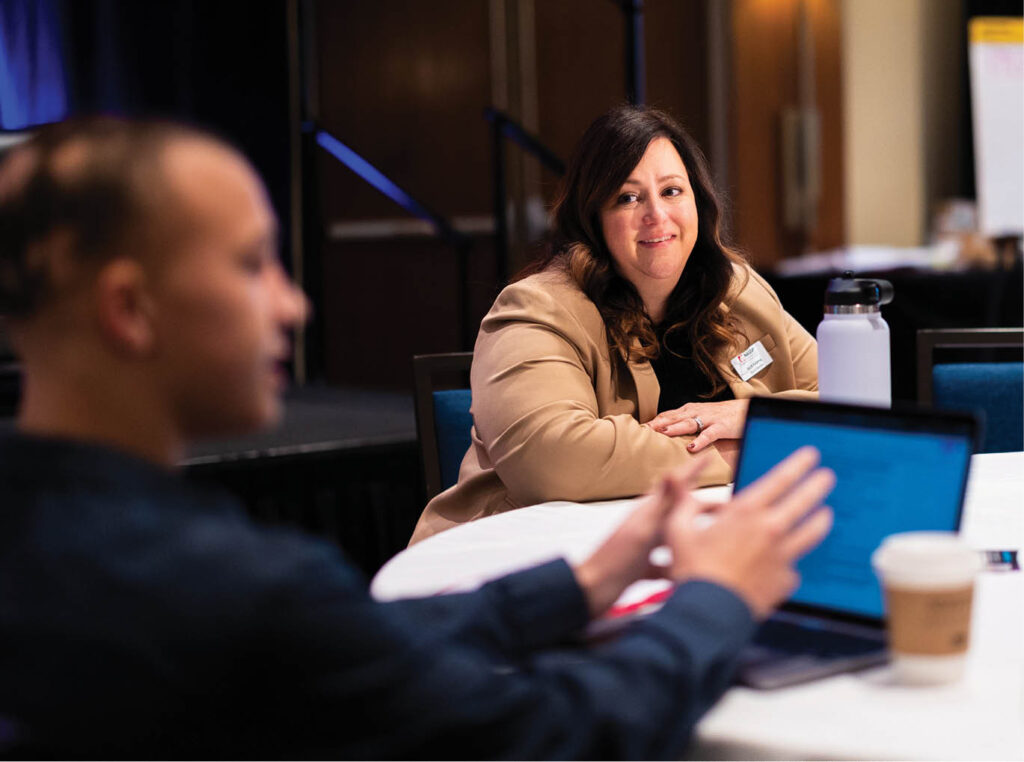Making the Move

I never considered becoming anything other than a teacher. I was raised by one, and it is in my blood. I feel silly when I say that, as I never witnessed my mom teaching, nor did I ever spend time in her classroom. But my childhood was filled with her reflections of former students, fellow teacher friends with whom she worked, principals who led the building, and stories that sounded so wonderful and realistic that it felt like I had been there, too. So, it’s no surprise that, like so many teachers I know, I grew up “teaching” my stuffed animals in front of my Toys “R” Us chalkboard.
When I was old enough to attend school, I loved it as much as I dreamed I would. I loved learning and my peers, and I adored my teachers. They even became additional moms to me that I collected one by one each year that passed. To me, school felt like home, and when I entered high school, I knew I had found my place. I realized then that I wanted to spend the rest of my life (my career, that is) in high school.
Becoming a high school teacher felt like a calling. I felt called to serve students, the school, and the community in which I grew up in the ways that former teachers, coaches, and advisers had inspired and challenged me. It sounds like a cliché, but I wanted to give back and cheer for students who maybe didn’t receive the support I had.

Moving Toward Leadership
I started teaching in 1997. I would spend years as an English language arts, social studies, and leadership teacher; speech and dance team coach; and activities director. Because my bachelor’s degree was from out of state, I was required to obtain my master’s degree within a certain amount of time. Not sure I would ever want to pursue administration, I enrolled in an administration and supervision program, opening the door to future endeavors. “Just in case” is what I told myself to justify this degree choice. An administration degree could only make me a better activities director, I thought.
It was amazing how many negative responses I received from fellow teachers at the idea of going into administration. I was “going to the dark side” or “crossing over” or becoming one of “them.” Nonetheless, I loved my law class and the budget class in ways that were surprising to me. It was interesting to think about school through a new lens. As an activities director, I had talked about climate and culture as the “feeling” of a school. Did people want to be there? Administrators talked about climate and culture in terms of whether students followed the rules. I wondered which was correct and if the real definition for me was somewhere in the middle.

I remember so clearly the day I decided it was time to move into administration. I was in my 21st year of teaching and was serving on a panel conducting interviews to replace one of our assistant principals. Neither of the final candidates met everyone’s expectations. Neither had been in the classroom very long, and neither had any administrative experience. I could feel the hesitance from the administrative team. The panel spent a lot of time going in circles reflecting on candidates. Should we repost the position? Should we go with an interim? Should we select a candidate from the pool anyway?
I could hear a voice inside myself acknowledging that it was time. It was time to stop complaining about the need for change and to start contributing toward change. It was time to start serving others in ways that would make a difference in new ways. It was time to start re-embracing my “why” that led me into education all those years ago. It was time to take the advice I had been giving my students for so many years about risk, vulnerability, and reward.
I spent a lot of time over the next year interviewing district and building-level female administrators asking very little about the job requirements and a lot about work/life balance. “Is this manageable?” I would ask. “How do you do it?” “How are your kids?” and “What did you have to sacrifice?” Every answer was unique, and today I fondly remember those conversations and the generosity of female leaders in my district.
The next spring, I became a high school assistant principal. I was thrilled beyond words, but the mom in me worried that this new position would potentially mean more nights at school with athletics and activities supervision. I didn’t need to worry, though, because my husband and family stepped in to support our girls. My former principal also fostered a culture of family first. She always made sure to reinforce personal commitments over work, and she has been such a great mentor.
Pushing Back on Assumptions
I have never been more aware of my gender in this profession than the moment I became an administrator. In my district, having female leadership at the high school level is not a rarity. However, I have noticed the lack of women in leadership at the secondary level beyond the bubble of my district.
To increase the number of female secondary school leaders, it’s critical that women purposefully connect with a variety of well-respected mentors (like I did) whose opinions they value. Such mentors can help them grow as leaders and push them to think in different ways. Many times, I have thought to myself, “What would [insert mentor here] do?” and the answer would guide and inform my next steps.
What has surprised me the most during my leadership journey is the number of times fellow administrators (many of whom were male) have encouraged me to apply for elementary school principal positions because I was a mom. Given that elementary school principals don’t have nearly as many evening activities to supervise and attend as secondary school leaders do, they believed that an elementary school position would be far more manageable for a mom of three.
While this advice was well-meaning, it was hard not to feel discouraged by it. Did my 26 years of experience at the high school level not count for anything? I’m proud to have ignored this advice and to have pushed back on such assumptions. I have never thought for one moment that gender should determine my placement in this world.
Today, I am a high school principal. When I’m asked how I got here, I always share that my relationships and high school experience as an educator were key. The networking I have purposefully done and the relationships I have fostered have proven invaluable over time. I also acknowledge that I stand on the shoulders of all those leaders who came before me. They are the ones who empowered me and believed in me and shared experiences from which I grew and learned. I am grateful for them, and I am humbled to serve.
Julie Kasper is the principal of Century High School in Hillsboro, OR, and a member of the NASSP Board of Directors.
